Abstract
It has become possible to control or even eradicate the Simulium fly vectors of Onchocerca volvulus, the causative organism of onchocerciasis. There are two vectors in Africa—namely, S. damnosum, characteristic of the rivers of West Africa, and S. neavei, which breeds on the carapaces of crabs in the streams of East Africa. The use of DDT applied to the water at a concentration as low as 0.1 p.p.m. for 30 minutes eliminates the larvae of Simulium. Such larvicidal methods have eradicated S. neavei from western Kenya and virtually eradicated S. damnosum from the Victoria Nile in Uganda. Excellent control sufficient to render the transmission of onchocerciasis almost negligible has been obtained at Léopoldville (Republic of the Congo) and in circumscribed areas in southern Chad, Northern Nigeria, and Sierra Leone. The following survey describes operational research on Simulium control carried out in Kenya, Uganda, the Congo, Chad, Nigeria, Ghana, Upper Volta and Sierra Leone.
Full text
PDF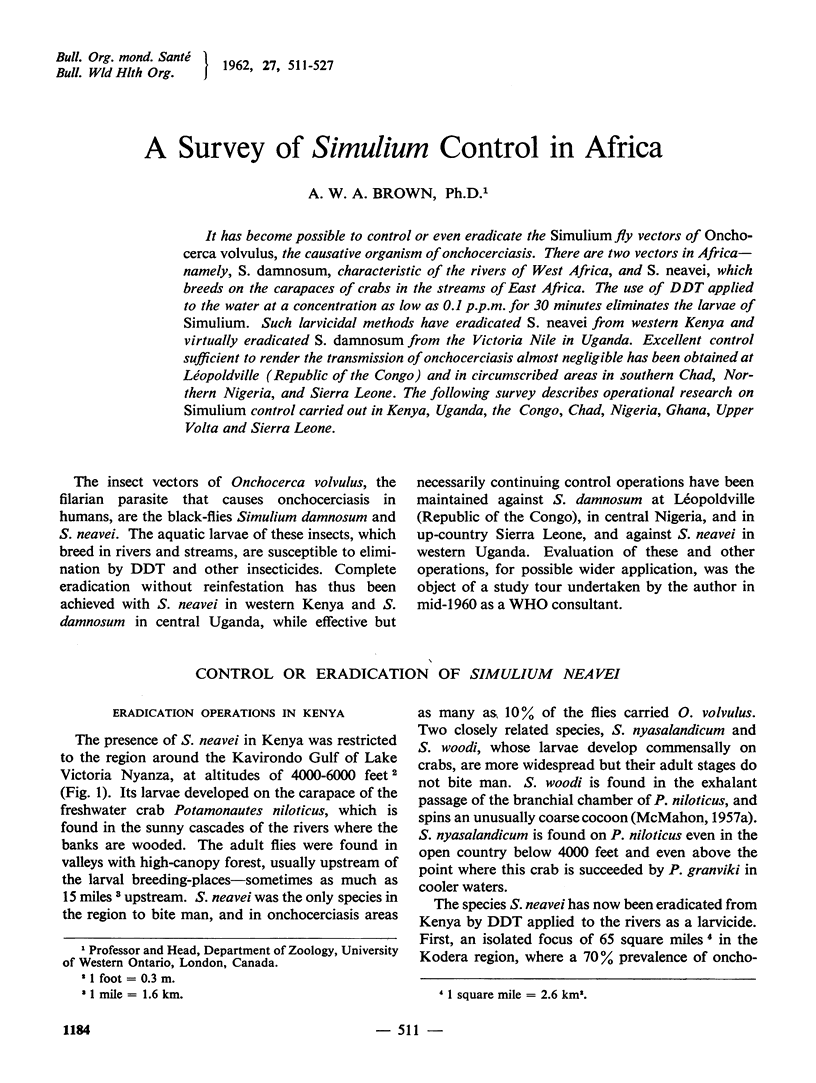
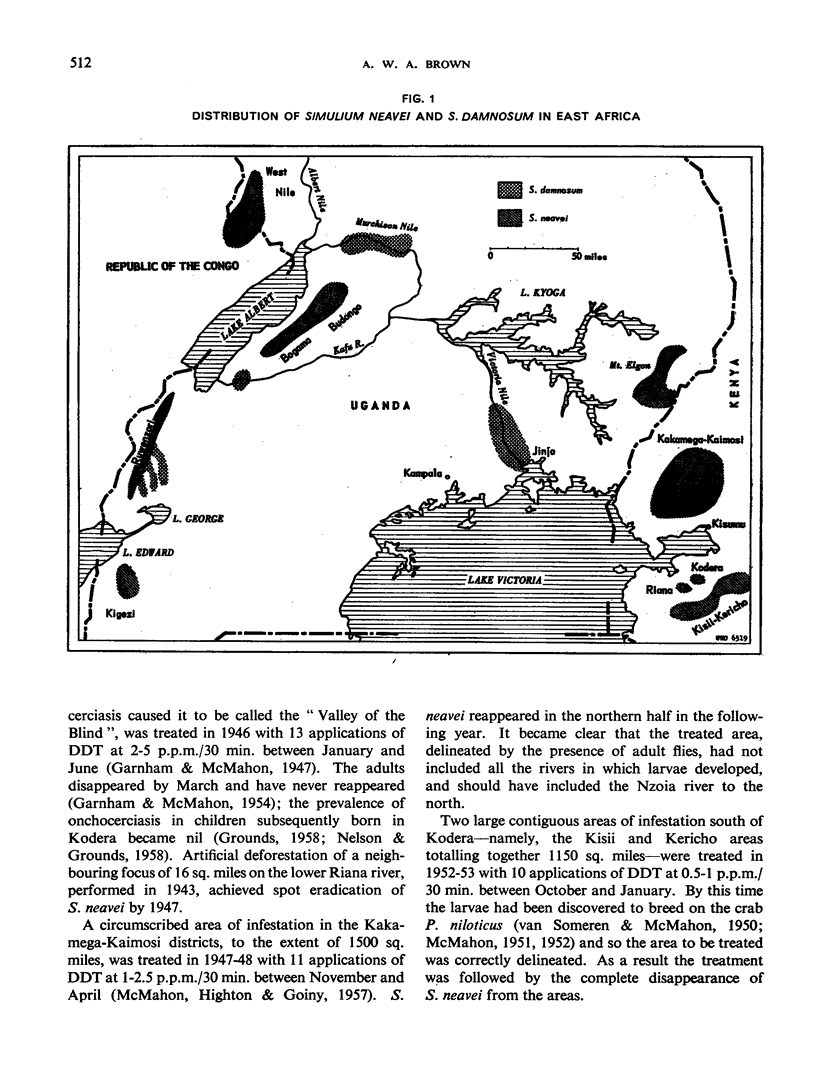

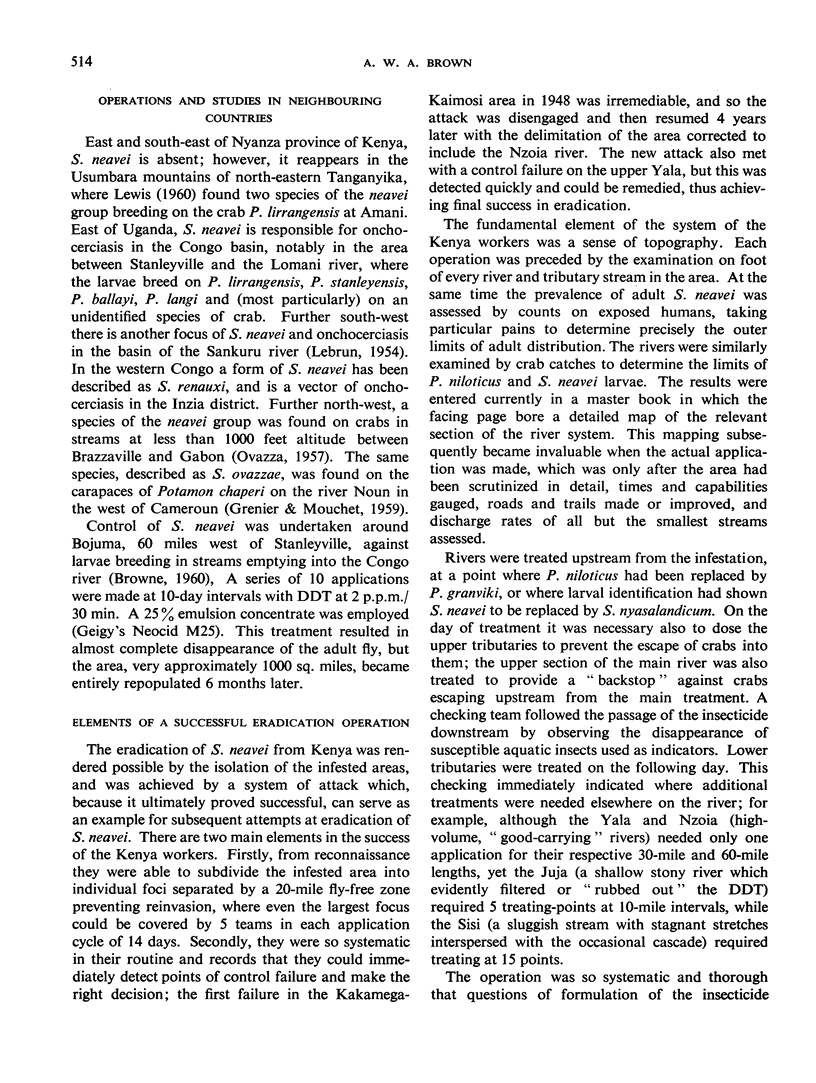
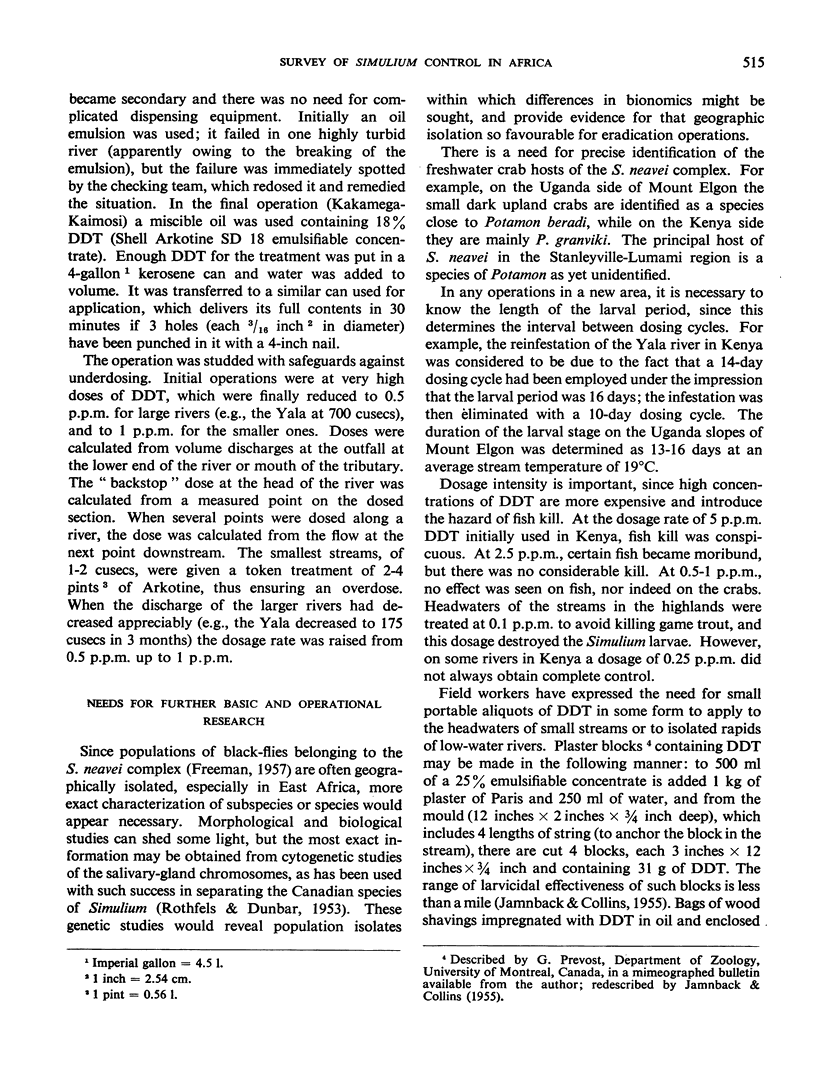
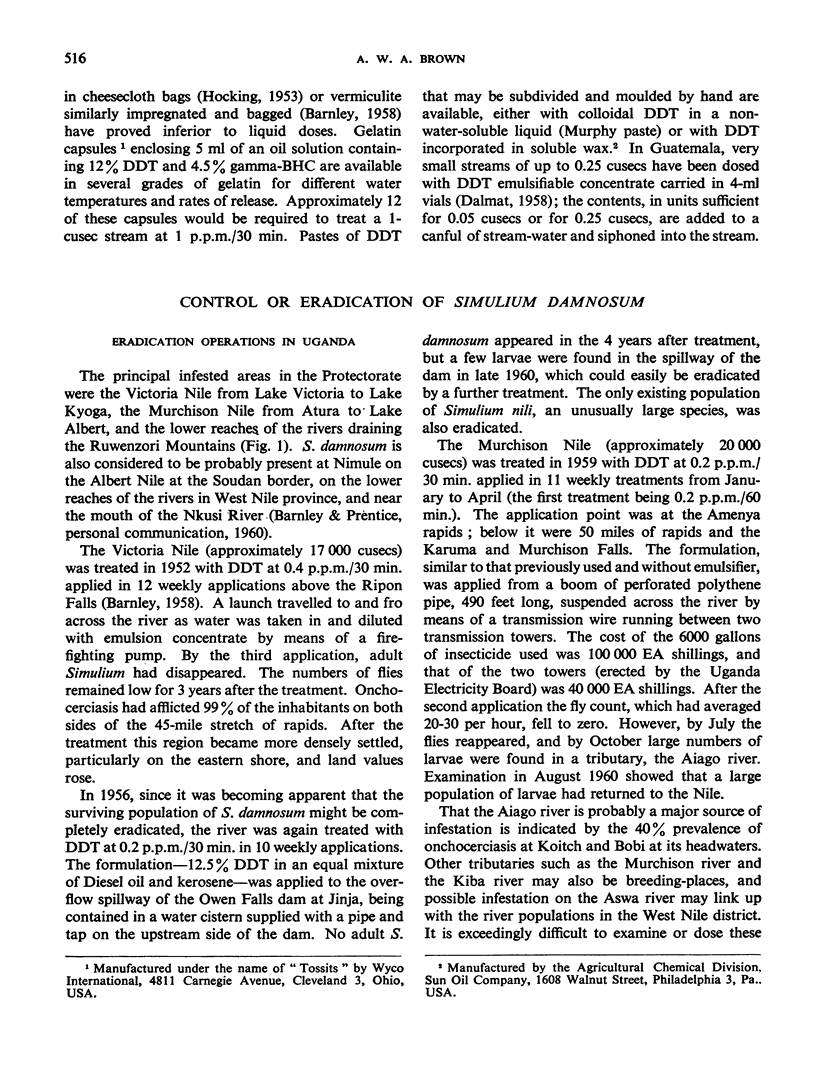
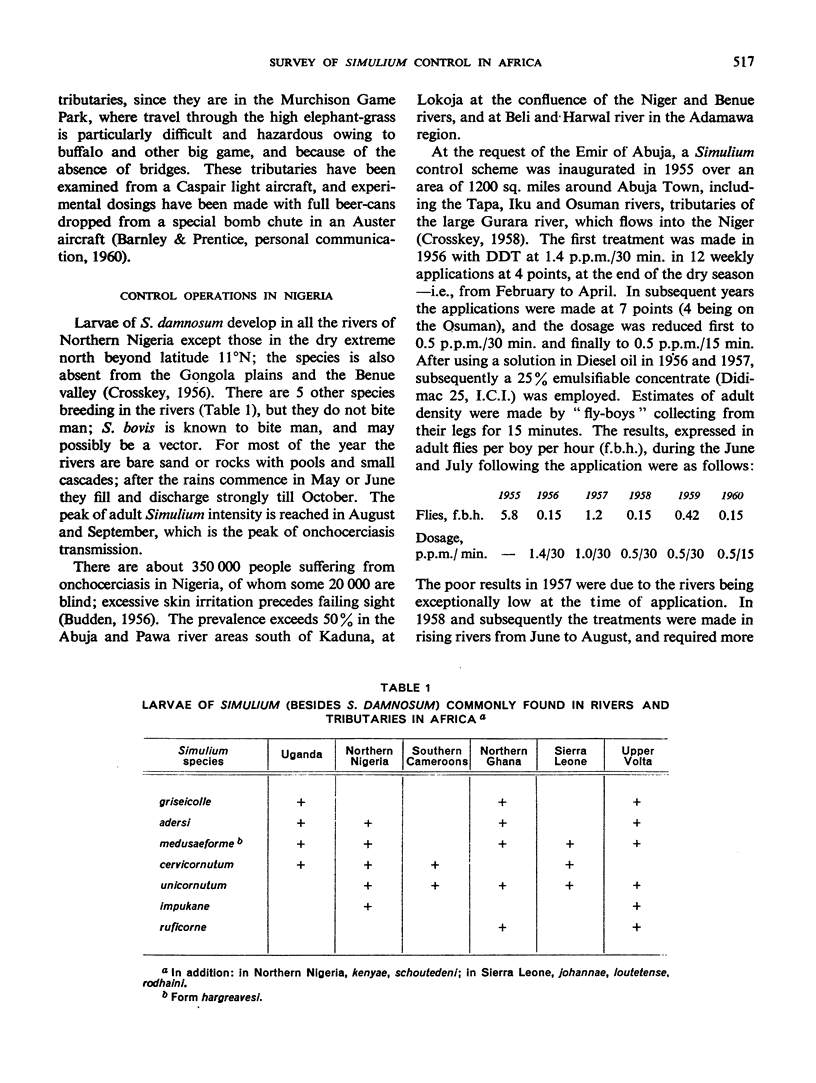
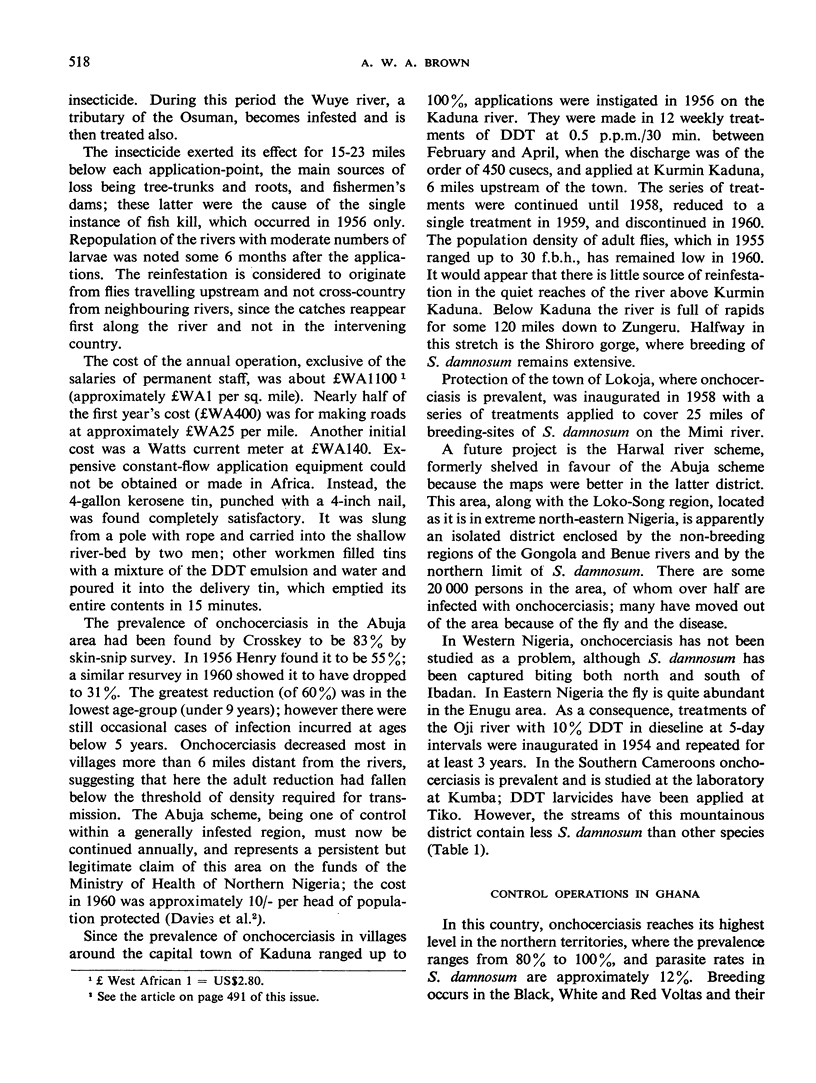
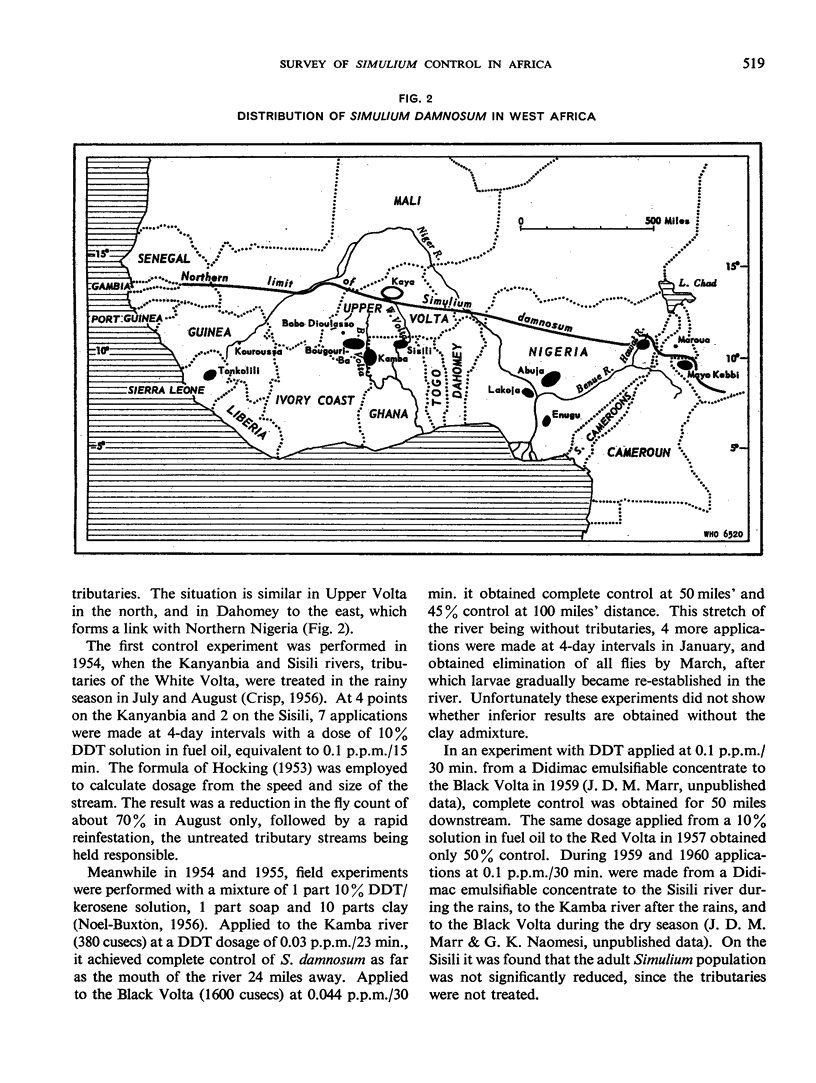
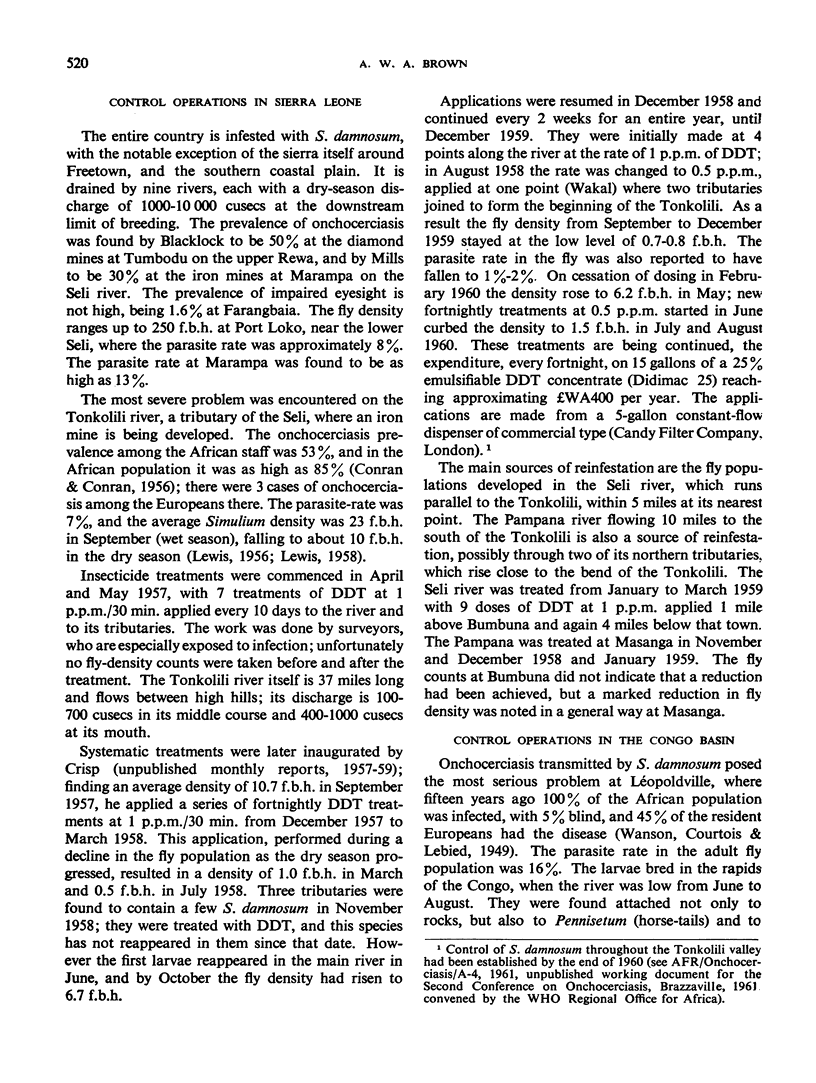
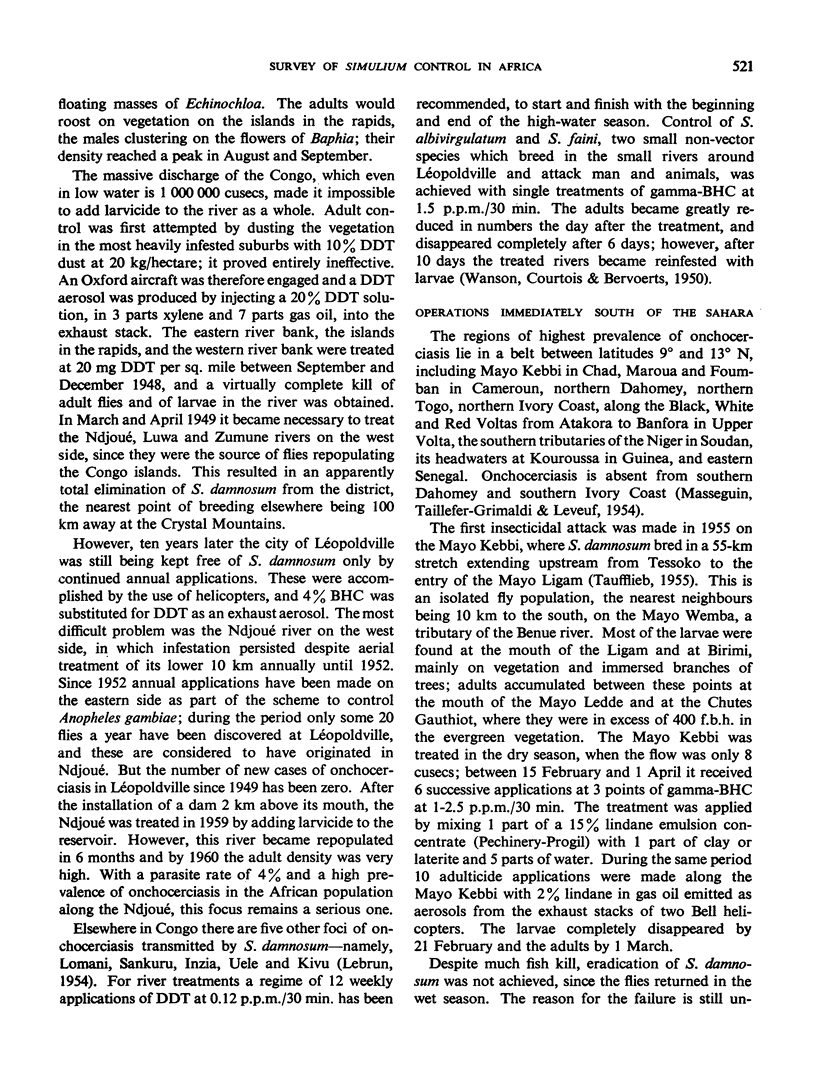
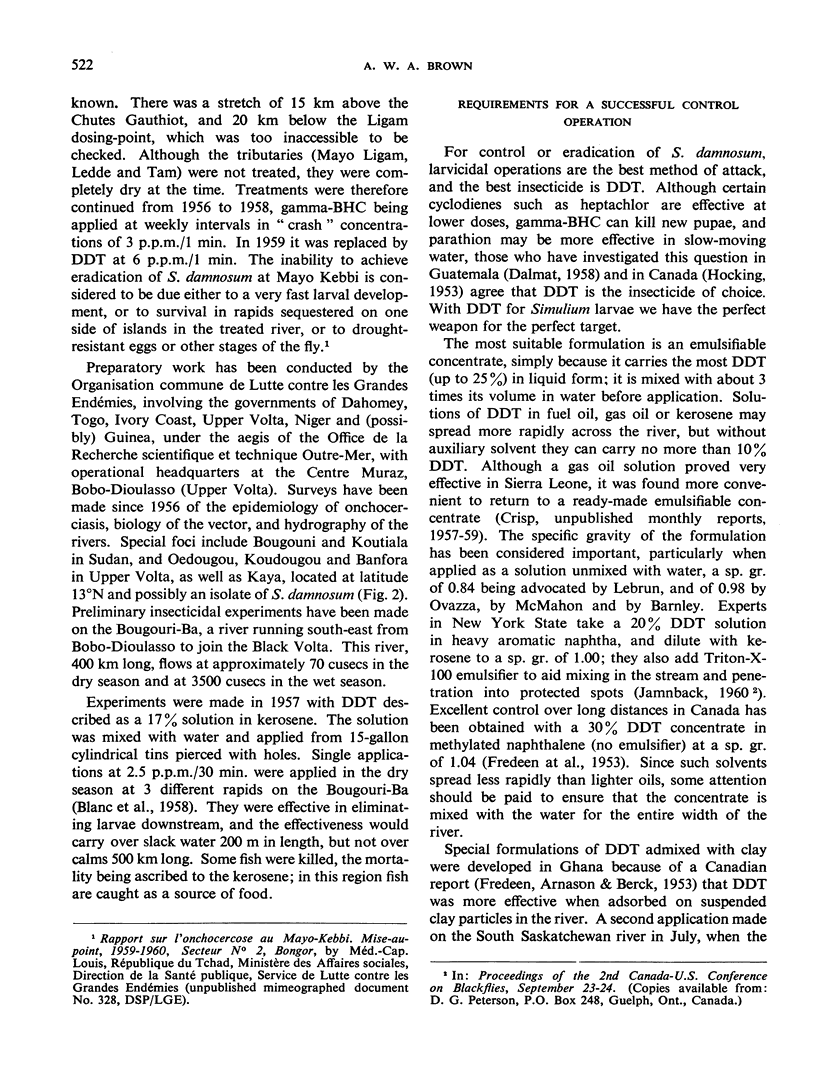

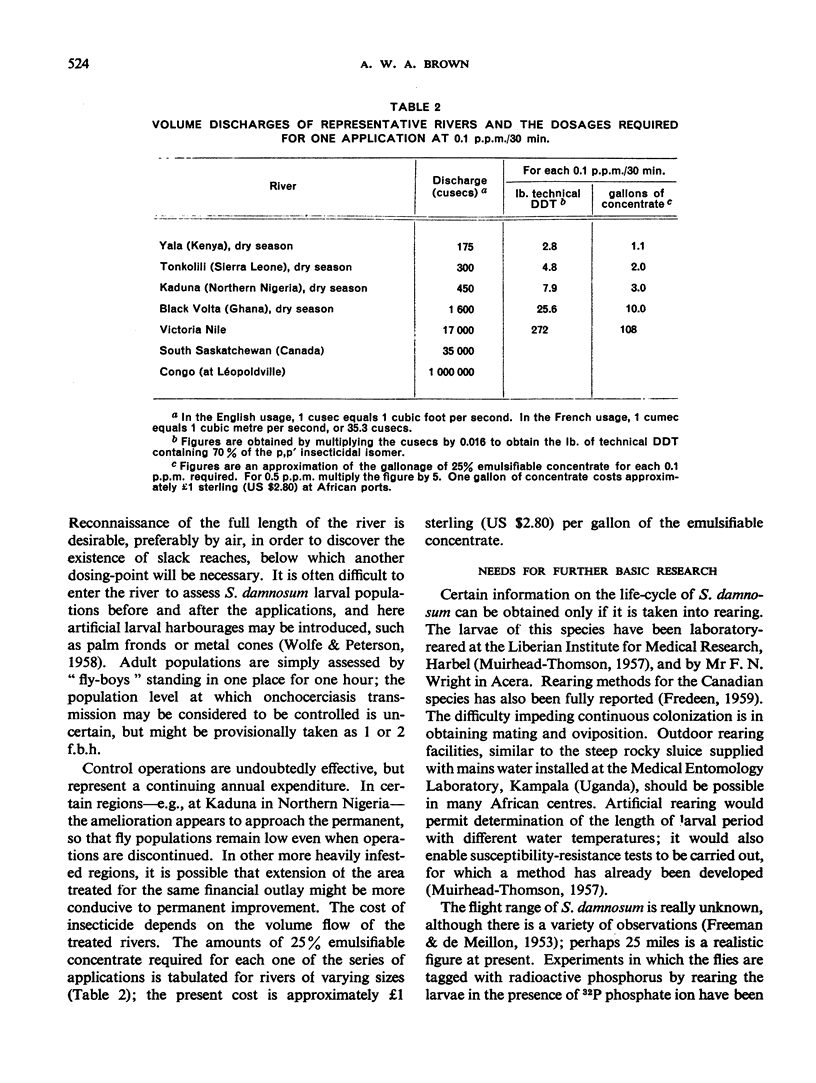

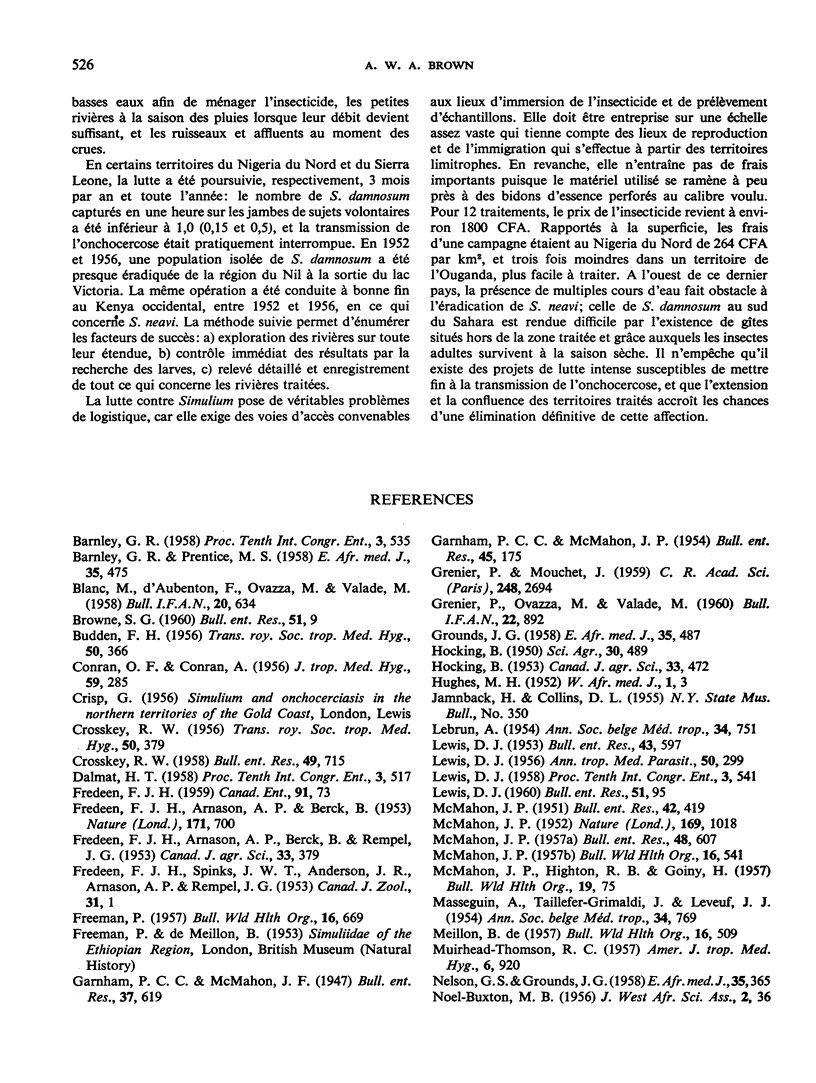
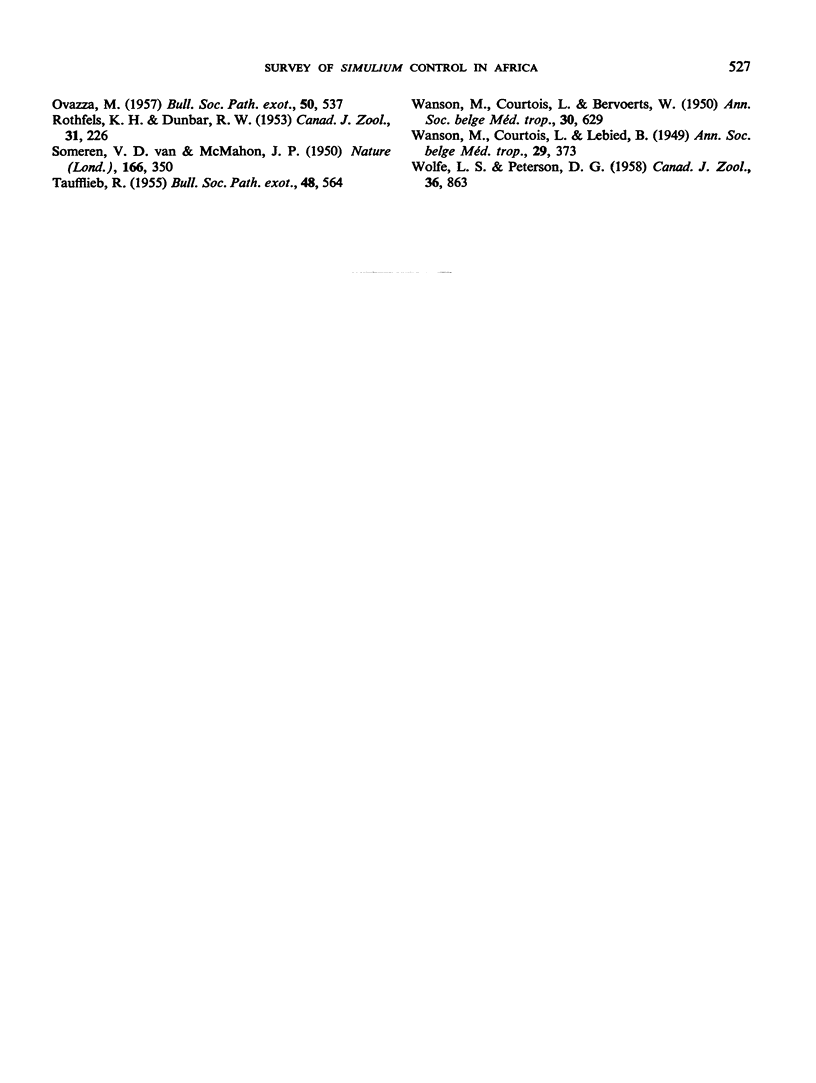
Selected References
These references are in PubMed. This may not be the complete list of references from this article.
- BUDDEN F. H. The epidemiology of onchocerciasis in Northern Nigeria. Trans R Soc Trop Med Hyg. 1956 Jul;50(4):366–378. doi: 10.1016/0035-9203(56)90045-1. [DOI] [PubMed] [Google Scholar]
- CONRAN A., CONRAN O. F. Medical survey of Tonkolili and adjacent valleys, Sierra Leone. J Trop Med Hyg. 1956 Dec;59(12):285–294. [PubMed] [Google Scholar]
- CROSSKEY R. W. The distribution of Simulium damnosum Theobald in Northern Nigeria. Trans R Soc Trop Med Hyg. 1956 Jul;50(4):379–392. doi: 10.1016/0035-9203(56)90046-3. [DOI] [PubMed] [Google Scholar]
- DE MEILLON B. Bionomics of the vectors of onchocerciasis in the Ethiopian geographical region. Bull World Health Organ. 1957;16(3):509–522. [PMC free article] [PubMed] [Google Scholar]
- FREDEEN F. J., ARNASON A. P., BERCK B. Absorption of DDT on suspended solids in river water and its role in black-fly control. Nature. 1953 Apr 18;171(4355):700–701. doi: 10.1038/171700b0. [DOI] [PubMed] [Google Scholar]
- LEBRUN A. Méthodes de prophylaxie de la filariose à onchocerca volvulus. Ann Soc Belg Med Trop (1920) 1954 Oct 31;34(5):751–761. [PubMed] [Google Scholar]
- LEWIS D. J. The medical entomology of Tonkolili Valley, Sierra Leone. Ann Trop Med Parasitol. 1956;50(3):299–313. doi: 10.1080/00034983.1956.11685769. [DOI] [PubMed] [Google Scholar]
- MASSEGUIN A., TAILLEFER-GRIMALDI J., LEVEUF J. J. L'onchocercose en A.O.F. Ann Soc Belg Med Trop (1920) 1954 Oct 31;34(5):769–788. [PubMed] [Google Scholar]
- MUIRHEAD-THOMSON R. C. Laboratory studies on the reactions of Simulium larvae to insecticides. I. A laboratory method for studying the effects of insecticide on Simulium larvae. Am J Trop Med Hyg. 1957 Sep;6(5):920–925. doi: 10.4269/ajtmh.1957.6.920. [DOI] [PubMed] [Google Scholar]
- McMAHON J. P., HIGHTON R. B., GOINY H. The eradication of Simulium neavei from Kenya. Bull World Health Organ. 1958;19(1):75–107. [PMC free article] [PubMed] [Google Scholar]
- McMAHON J. Phoretic association between Simuliidae and crabs. Nature. 1952 Jun 14;169(4311):1018–1018. doi: 10.1038/1691018a0. [DOI] [PubMed] [Google Scholar]
- NELSON G. S., GROUNDS J. G. Onchocerciasis at Kodera eleven years after the eradication of the vector. East Afr Med J. 1958 Jul;35(7):365–368. [PubMed] [Google Scholar]
- OVAZZA M. Présence de simulies du groupe neavei au Moyen-Congo, Afrique Equatoriale Française. Bull Soc Pathol Exot Filiales. 1957 Jul-Aug;50(4):537–539. [PubMed] [Google Scholar]
- WANSON M., COURTOIS L., BERVOETS W. L'extinction des simulies de rivières à Léopoldville. Ann Soc Belg Med Trop (1920) 1950 Sep;30(3):629–637. [PubMed] [Google Scholar]
- WANSON M., COURTOIS L., LEBIED B. L'éradication du Simulium damnosum Théobald à Léopoldville. Ann Soc Belg Med Trop (1920) 1949;29(3):373-403, ch. [PubMed] [Google Scholar]
- van SOMEREN V. D., McMAHON J. Phoretic association between Afronurus and Simulium species, and the discovery of the early stages of Simulium neavei on freshwater crabs. Nature. 1950 Aug 26;166(4217):350–351. doi: 10.1038/166350a0. [DOI] [PubMed] [Google Scholar]


